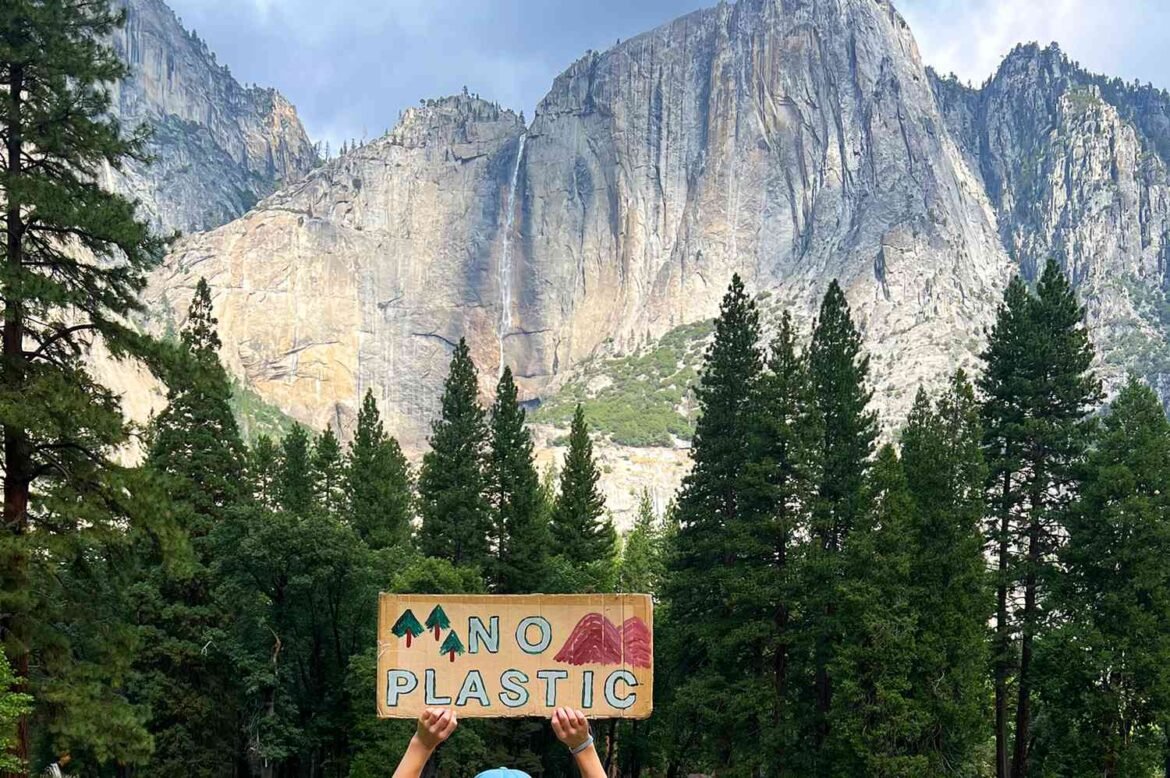:max_bytes(150000):strip_icc():format(jpeg)/TAL-header-no-plastic-sign-5-gyres-NOPOLUTEINNP0425-055e00ca02ca486e86526c3a0aa35e3e.jpg)
- The 5 Gyres Institute is starting its annual initiative to track amounts of trash in National Parks.
- Any visitor to national parks can help by recording data about the trash they see in any U.S. park or federal land through October.
- The crowdsourced data is used to make scientific recommendations for reducing waste.
On April 22, we’ll all celebrate Earth Day. There’s no better way to honor this beautiful planet than by doing our part to keep it clean. And the 5 Gyres Institute is kicking off its fourth annual Plastic-Free Parks TrashBlitz project to do just that.
The community science initiative’s mission is to track pollution trends in the U.S. National Parks and on federal lands. Of course, it doesn’t just leave it there. It also enlists the help of volunteers to collect trash at “any land managed by the federal government, including the National Park Service, National Forest Service, Bureau of Land Management, and Fish and Wildlife Service,” and log their findings in the TrashBlitz app. This data, the organization noted in a statement provided to Travel + Leisure, contributes to its annual report that uncovers the top items, materials, and brands found, which also outlines science-based recommendations to reduce waste.
“For three years, TrashBlitz has served as a valuable tool in tracking waste trends across national parks. From this data, we know that single-use plastic is the worst offender, and we’re seeing the same brands commonly identified in waste audits all over the world,” Nick Kemble, a program associate at 5 Gyres, shared. “Systemic changes, like implementing reuse and refill systems and shifting to better alternatives, can have a real, immediate impact on reducing waste in national parks.”
Like Kemble said, plastic has made up the majority of trash logged on the app for the past three years by an overwhelming degree. According to the group, it made up 75 percent of all waste recorded. The most common single-use plastic items included food wrappers, bottles, bottle caps/rings, cigarette butts, wipes, and fragments. As for which brands are most commonly found, that list includes Coca-Cola, Pepsi, Gatorade, Marlboro, and Camel.
All this information is then used to help push more environmentally friendly legislation, including the Reducing Waste in National Parks Act, which seeks to “eliminate the sale and distribution of disposable plastic products.” And this work is all the more important with the drastic cuts to national park funding.
“The TrashBlitz data from previous years underscores the urgent need to address plastic pollution in our national parks. Now is not the time to cut essential resources and personnel responsible for waste management, education, and park maintenance,” Alison Waliszewski, the director of regional policy and program development, added. “We can all step up to help our parks during this time, and we’re calling on the public to take action by collecting data that can push forward solutions.”
Volunteers can take part and collect data now through October 31, 2025. See more about how to sign up at 5gyres.org/PlasticFreeParks.


